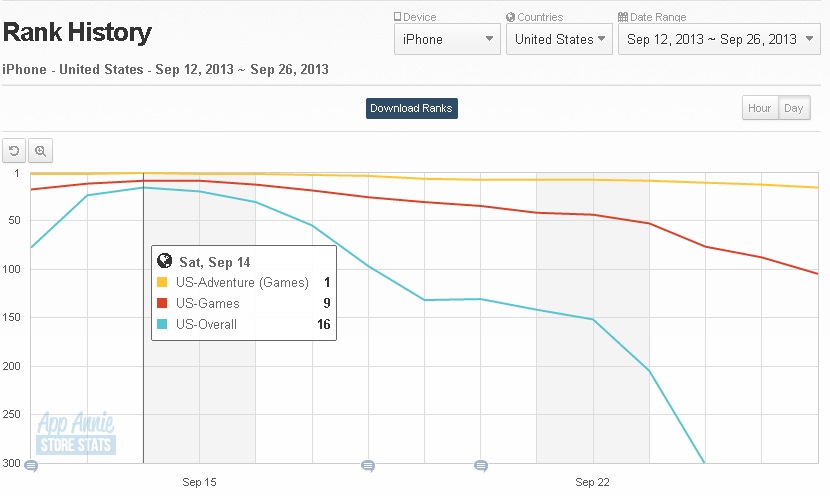I supervise many MSc students in their dissertation projects. Writing a dissertation can be challenging, and students are often faced with many obstacles that specifically relate to the writing process and how to communicate the dissertation’s core idea and contributions. Here are Ten Tips that relate to the writing aspect of the dissertation that I believe are important and will help with writing a good dissertation.

Joost Rietveld
Associate Professor in Strategic Management
UCL School of Management
COMPETITIVE STRATEGIES WITHIN AND BETWEEN PLATFORM MARKETS (SLIDES)
Posted byFor the past three years, I taught a Master’s level course on Competitive Strategies Within and Between Platform Markets. In the course, consisting of six lectures and six case-based seminars, I discuss how platforms compete and what competitive dynamics within platforms look like. The reading list for the course is comprised of academic articles in the fields of strategic management, information systems, marketing and economics. Cases were constantly updated and include AirBnb, Spotify, Nintendo, and mobile ‘killer apps’, among others. Master’s (MSc) students interested in this elective came from various study programs, including strategic management, entrepreneurship and business and information management.
Now that I likely won’t be teaching this course in this same format for the foreseeable future (given the change of institutions and the way UCL’s teaching is organized), I decided to share its contents. Below are a download link to a compressed folder (.ZIP) including the course’s syllabus and lecture slides (in PDF), as well as a link to my Slideshare account where the slides can be viewed without having to download.
Enjoy and please contact me in case you have any questions!
Download lecture materials as a compressed folder (.ZIP)
How the Freemium Business Model Affects Gamers’ Willingness to Play and Pay
Posted byMany digital distribution platforms such as the iOS App Store and Steam have allowed content producers to operate the freemium business model. In this model, consumers can download a barebones version of a game or app for free, but then have to pay for additional features such as downloadable content or enhanced functionality. The freemium business model removes consumers’ barriers to adoption and allows consumers to more flexibly pay the exact amount of money they are willing to spend. Not surprisingly, the freemium model has taken off in the last few years: in 2016, 76% of all apps on the iOS App Store and more than 11% of the games released on Steam operated the freemium business model. We do, however, know very little about how the choice of this business model affects consumers’ willingness to spend time and money on digital content.
Why We Can’t Assess Super Mario Run’s Performance Only By Its Revenues
Posted byNintendo’s Super Mario Run has finally come out for iPhone. The game has been downloaded more than 10 million times and raked in over US$ 4 million on its first day. That said, in order to fully understand the impact of Super Mario Run on Nintendo’s long term performance, we need to look beyond the mobile game’s revenues.
Market Failure in the Dutch Video Game Industry: Facts, Causes and Solutions
Posted byThe evident state of the Dutch games industry is still sinking in, even after I’ve had a few days to think about the news that came out last week. The statistics came from the Dutch Games Association (DGA) in its second installment of the Games Monitor, a report profiling the economic development of the Dutch game industry from 2011 to 2015. The Dutch game industry ― encompassing development, production, publishing, and activities related to the commercialization of digital games ― is one of nine industries labelled ’Top Sectors‘ by the Dutch government. The Games Monitor documents some surprising trends that raise important questions. First, there is a sizeable discrepancy between the number of graduates coming out of degree programs for the gaming industry and the size of the labor market. Second, the report shows signs of stagnation for key indicators of economic growth in the sector. Combined, these findings suggest a difficulty to adapt to industry shifts. Whereas the global game industry is growing at double-digit rates, the Dutch market is lagging behind. What is driving these trends? And, what potential policies are there for regaining growth? (meer…)
PRESENTATION: HEALTHY BUSINESS MODELS?
Posted byHow can developers of serious games for health care applications best design their business models? This was the question I got asked together with the invitation to give a keynote presentation at the first Sino-Dutch Serious Games in Health Care Symposium (November 23 2015, Groningen, the Netherlands).
After some thinking, I arrived at the following blurb and presentation, which I presented at the medical center of the University of Groningen, the Netherlands:
Healthy Business Models? A Framework for Business Model Design and How it May be Applied to Serious Games in Healthcare
Designing and operating a business model is a non-trivial task for any entrepreneurial firm. The choice of business model is important because (a) it is consequential for the organization of the firm and its production processes, and (b) because it impacts the revenue structure of the firm (e.g., volume, timing, and distribution). Furthermore, while a business model rarely provides a source of sustained competitive advantage, it can be a risk-mitigation tool and thus affect the firm’s chances for survival. A firm’s business model can be analyzed along two dimensions that look at how the firm transacts with external actors in the value system, and how it transacts with customers. Using these dimensions, a framework of four ideal type business models and how they affect a firm’s chances for survival is presented. Strategic implications for each business model ideal type are discussed and placed in a context where creative freedom and firm survival need to be balanced against profits and quick turnarounds. It is for these reasons that the framework is specifically relevant for project-based e-businesses such as video game developers, creative agencies, movie producers, and app creators. Illustrations of how the four business models apply to serious games in healthcare will be presented.
Key takeaways from the presentation:
- Digital distribution platforms allow for more freedom in how firms design and operate their business models;
- Firms can engage their end-users before monetizing them, and this allows users to form accurate assessments of their expected benefits. This likely leads to more consumers using the digital application, but it will also delay -and possibly decrease- the moment when income is generated;
- Firms can also dis-intermediate from other firms in the value system with greater ease than before. This increases the share of the pie that a firm captures from its consumers for a digital application, but it likely reduces the size of the pie that the firm captures. Other firms in the value system oftentimes contribute valuable complementary skills and assets;
- Developers of serious games in health care, or any game developer for that matter, operate one of four archetype business models: work-for-hire; artist-led-distribution; multi-sided; or, freemium. Each has their own set of strength and weaknesses;
- Developers of serious games in health care are advised to seriously think about their business model and how to best match it to their product designs: This exercise ought to coincide with the start of the product development process;
- Players of serious games for health care may be the end-users of these digital applications, they not necessarily equate their customers. Firms are advised to carefully identify their key stakeholders, including non-using customers, and institutions that may validate the medical quality of the digital application;
- In the Netherlands, health care insurance firms seem like an untapped customer group that can facilitate both revenues and validation;
- The choice and implementation of a business model is a non-trivial task; (a) it is consequential for the organization of the firm and its production processes, and (b) it impacts the revenue structure of the firm (e.g., volume, timing, and distribution).
SO YOU WANT AN ADVERGAME … NOW WHAT?!
Posted byIn my last article, I set out to acquaint you with the concept of advergaming – the use of video games for advertising purposes. Here I explore the practicalities of having such a game, or branded app, developed. The ‘data’ for this article come from a series of interviews with specialized developers as well as professional experience in the field.
 When you are in the business of pet products (or any non-digital goods industry for that matter), having a branded app or video game developed for the proliferation of your brand can seem like a daunting task. How do I materialize my vision into a functional product? How can I best allocate my financial resources? And, how will I yield the biggest return from my investments? Notwithstanding the medium’s sticky and viral nature, if you don’t have the right ingredients to work with, you are poised for costly failure. Although nobody really knows what ultimately drives the adoption of creative goods such as video games, there are certain guidelines that facilitate a smooth development process and which may increase your chances for success. In this article, I highlight four such guidelines. (meer…)
When you are in the business of pet products (or any non-digital goods industry for that matter), having a branded app or video game developed for the proliferation of your brand can seem like a daunting task. How do I materialize my vision into a functional product? How can I best allocate my financial resources? And, how will I yield the biggest return from my investments? Notwithstanding the medium’s sticky and viral nature, if you don’t have the right ingredients to work with, you are poised for costly failure. Although nobody really knows what ultimately drives the adoption of creative goods such as video games, there are certain guidelines that facilitate a smooth development process and which may increase your chances for success. In this article, I highlight four such guidelines. (meer…)
Successfully Using Games as Marketing Tool
Posted byThe Case of Chipotle’s Scarecrow

This is the second article in a series of three commissioned by the General Director of PETS International, the trade journal for the $100 billion international pet industry. Here, I delve into the use of video games for advertising purposes, or ‘advergames.’ Advergames can be used with various levels of intensity to promote products, organizations, and viewpoints. Using the case of Chipotle’s Scarecrow, I outline the value, use, and some success metrics for games as a marketing tool.
Chipotle’s Scarecrow Campaign
In September 2013, restaurant chain Chipotle Mexican Grill set out to promote its new corporate initiative Food With Integrity. The FWI initiative was meant to draw attention to Chipotle’s emphasis on sourcing sustainably (i.e. local and organic) raised food. The low-cost restaurant chain known for its burrito’s and taco’s went against the grain for promoting its corporate ethos to the outside world. Instead of opting for a traditional marketing campaign, Chipotle contracted digital production agency Moonbot for the development of a mobile video game accompanied by an animated digital short film, both titled “The Scarecrow.”
Chipotle’s Scarecrow was released on September 12, 2013 for Apple’s iOS platform (iPhone & iPad). After five days, the adventure game had already accumulated 300,000 downloads and earned its rank in Apple’s U.S. Game charts. At the same time, the animated short film enjoyed over 5 million views on YouTube, fuelled by coverage from the New York Times and numerous other publications applauding the campaign. Venturebeat labeled the Scarecrow campaign as “one of the most successful marketing campaigns in history.” Since then, the video game has continued to do well, and the video has ranked up nearly 14 million views on YouTube. (meer…)
Fighting the Console Wars (Google Ngram)
Posted byThe first generation of video game consoles was launched in 1972 with the Magnavox Odyssey. Today, almost four decades later, we are in the eight generation (Wii U, PlayStation 4, Microsoft Xbox One). In every generation, the producers of video game platforms are said to engage in a console, or standards, war. By Wikipedia’s definition, standard wars describe competition between mutually incompatible proprietary formats (i.e. video game consoles) that compete for the same market (i.e. gamers). Standard wars are often characterized by political and financial influence on content producers (i.e. game publishers) by the manufacturers of the technologies (console producers). Generations of video game consoles are usually typified by a clear winner (e.g. Nintendo’s NES in the third generation, or Sony’s PlayStation 2 in the sixth generation), due to strong (cross-) network effects that accrue to the platform with the most users. After all, a surge of gamers on a platform will attract even more gamers as well as producers of video games.
The Google Ngram above nicely documents the relevant video game console producers in the period 1975-2008 and how their fortunes fluctuated between different generations of consoles. This period includes generations one through six and clearly illustrates the rise and fall of Atari as a major console producer in the 70’s and early 80’s. After the video game industry crashed in 1983, Nintendo was praised for singlhandedly reviving it with the launch of the Nintendo Entertainment System in 1985 (in the US). The graph also illustrates the intensity of the ‘war’ between Sega and Nintendo that followed in the 90’s, and the latter’s firm’s demise after the Dreamcast failed to gain traction. Lastly, the graph shows how “new kids on the block,” Sony and Microsoft, have steadily gained market presence since their entry in the industry with their PlayStation (’95) and Xbox (’01) brands, respectively. The graph below adds and collapses the individual graphs to paint a strong picture of the video game industry’s growth over the last thirty some years. Enjoy!
PS. Google Ngram let’s you do lots of cool things, and you can use their source data of millions of books, too! Click here for more info.
From Tamagotchi to Nintendogs
Posted byWhat can the global pet industry do with video games as a promotion vehicle? This is the question I got asked a few weeks ago by the General Director of PETS International, the trade journal for the $100 billion international pet industry. More specifically, I was commissioned to write three short articles on the potential linkages between video games and the business of pets and pet accessories. In the first article, that can be downloaded here, I outline the economic and cultural relevance of the video game industry and provide some examples of video games that speak to an audience of pet owners such as Tamagotchi, Nintendogs, and the multitude of virtual pet simulators on mobile app stores. In subsequent articles I will highlight some of the strategic marketing opportunities and challenges of advergames and in-game product placements as applied to the pet industry. Stay tuned!


